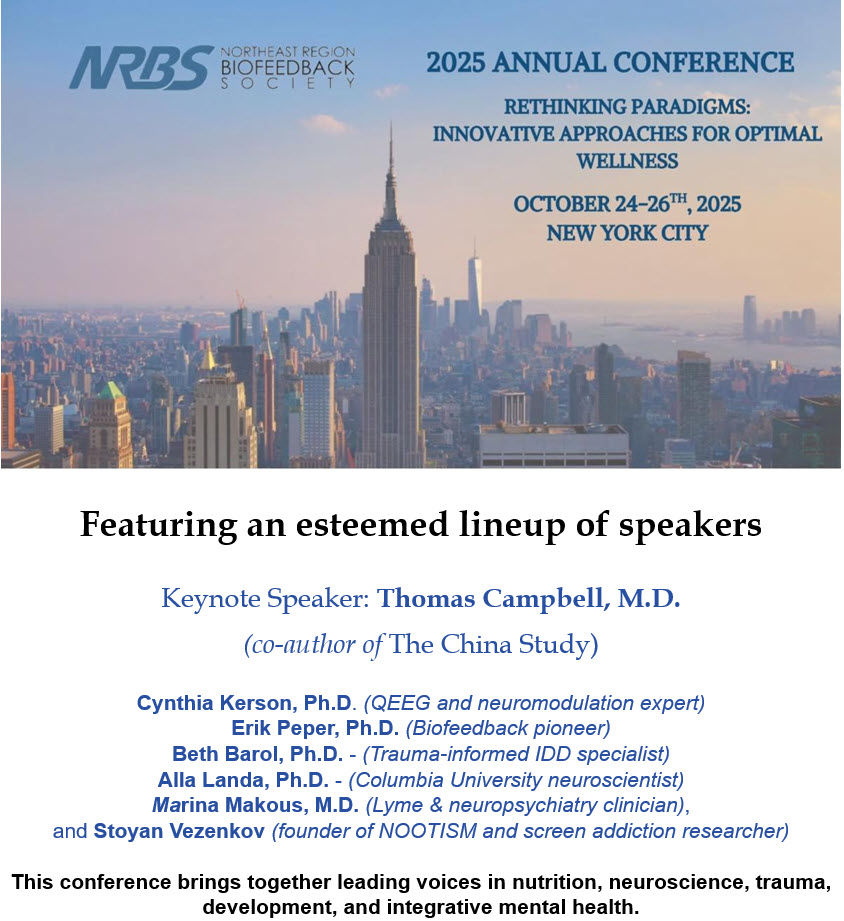Psychopharmacology Debates: Cannabis Associated with Cardiovascular Risk
- Fred Shaffer
- Jun 21
- 8 min read
Updated: Aug 1

Cannabis and Heart Health: What the Latest Research Shows
This post reports on an important systematic review and meta-analysis of the cardiovascular risks associated with cannabis by Storck and colleagues (2025).
Takeaway
A groundbreaking new study has delivered sobering news about cannabis and cardiovascular health, analyzing data from over 432 million people to reveal that cannabis use significantly increases the risk of serious heart problems.
The comprehensive analysis found that people who use cannabis are 29% more likely to experience a heart attack, 20% more likely to have a stroke, and more than twice as likely to die from heart disease compared to those who don't use cannabis.
These findings challenge the widespread perception of cannabis as a relatively benign substance and carry profound implications as cannabis becomes increasingly legal, potent, and normalized in society.
What is the Science?
The cardiovascular effects of cannabis stem from its complex interaction with the body's endocannabinoid system, particularly through two key receptors known as CB1 and CB2. THC, the primary psychoactive component that produces cannabis's characteristic high, acts as a partial agonist at both receptors but shows greater affinity for CB1 receptors, which are abundantly distributed throughout the brain and cardiovascular system. When THC activates these CB1 receptors, it sets off a cascade of potentially harmful cardiovascular effects that researchers are only beginning to fully understand.
The activation of CB1 receptors triggers several concerning physiological responses.
Cannabis use stimulates the sympathetic nervous system, causing increases in heart rate and myocardial oxygen demand that can be particularly dangerous for people with existing heart conditions. The substance also promotes oxidative stress and inflammation within blood vessels, leading to endothelial dysfunction and potential damage to the heart muscle itself.
Perhaps most troubling is cannabis's unpredictable effect on blood flow, with the drug capable of causing either vasodilation or vasoconstriction depending on the individual's baseline health status and the dose consumed.
While CB2 receptor activation may offer some anti-inflammatory and protective effects, these benefits appear insufficient to counteract the harmful effects mediated through CB1 pathways, especially among habitual users or those consuming high-potency products. The situation has become more concerning as THC concentrations in cannabis products have increased dramatically over the past two decades, intensifying the physiological impact on users. Complicating matters further, many cannabis users also consume tobacco, alcohol, or other stimulants, creating a polysubstance use pattern that can amplify cardiovascular risks.
How Did They Do It?
The meta-analysis synthesized data from over 432 million participants drawn from 24 observational studies—17 cross-sectional, six longitudinal cohort, and one case-control—published between January 2016 and January 2023. Each study provided quantitative risk estimates comparing cannabis users to non-users for major adverse cardiovascular events.
Using the ROBINS-E tool, the researchers assessed risk of bias across multiple domains, including confounding and exposure misclassification. Two reviewers independently extracted data on study design, participant demographics, outcome definitions, and covariate adjustments. The pooled estimates were calculated using a random-effects model with inverse-variance weighting to account for substantial between-study heterogeneity, enabling robust quantification of cannabis-associated cardiovascular risks.
What Did They Find?
The findings were both striking and consistent.
Cannabis users demonstrated a statistically significant 29% increased risk of acute coronary syndrome, encompassing heart attacks and related conditions. The stroke risk was elevated by 20% among cannabis users compared to non-users. Most alarming was the finding that cannabis users faced more than double the risk of dying from cardiovascular causes, with an odds ratio of 2.10.
An odds ratio (OR) of 2.1 means that the odds of an outcome, in this case, cardiovascular death, are 2.1 times higher in the exposed group (e.g., cannabis users) compared to the unexposed group (non-users).
These associations remained robust even when the analysis was restricted to higher-quality cohort studies, which yielded a relative risk of 1.32 for major adverse cardiovascular events.
The research revealed that certain populations face particularly elevated risks. Young adults between ages 15 and 22 showed dramatically higher rates of heart attack when using cannabis regularly, a finding that's especially concerning given the increasing normalization of cannabis use among teenagers and young adults. Frequent users, defined as those consuming cannabis at least weekly, demonstrated disproportionately higher rates of both transient ischemic attacks and full strokes. Even after researchers accounted for confounding factors like tobacco use, hypertension, and elevated cholesterol, cannabis use remained an independent predictor of cardiovascular events.
What Were the Limitations?
Despite the study's impressive scope and methodological rigor, several important limitations must be acknowledged. Most concerning is the reliance on self-reported cannabis use across the majority of included studies, which introduces potential for recall bias and social desirability bias. Few studies collected detailed information about dosage, frequency, or method of consumption, preventing researchers from conducting dose-response analyses that could provide more nuanced insights into risk patterns. The predominance of cross-sectional studies also limits the ability to establish definitive causal relationships, though the inclusion of longitudinal cohort studies that yielded similar results strengthens confidence in the findings.
Misclassification bias presents another significant concern, particularly in studies using administrative databases that may not accurately capture non-medical cannabis use. Some studies relied on overlapping datasets, potentially inflating sample sizes and introducing duplication.
The quality assessment revealed that 20 of the 24 included studies carried high risk of bias, primarily due to inadequate control for confounding variables and suboptimal exposure classification methods.
The restriction to English-language publications may have introduced additional bias, and the focus on recent studies, while reflecting contemporary use patterns, may have excluded valuable historical data.
What is the Impact?
The implications of these findings extend far beyond academic medicine into clinical practice, public health policy, and future research priorities. For clinicians, the results suggest that cannabis use should be considered a significant cardiovascular risk factor, warranting systematic screening in patients presenting with chest pain, palpitations, or neurological symptoms suggestive of stroke. This represents a fundamental shift from current practice, where cannabis use is often overlooked or considered benign in cardiovascular risk assessment.
The findings also demand serious reconsideration of public health messaging around cannabis safety. As jurisdictions worldwide continue to legalize cannabis and as product potency continues to increase, regulatory frameworks may need to incorporate cardiovascular warnings similar to those required for tobacco products. The normalization of cannabis use, particularly among young people who may be at highest risk, requires urgent attention from public health officials and educators.
For the research community, this meta-analysis highlights critical gaps that demand immediate attention. Future studies must incorporate biomarker-verified cannabis exposure measures, detailed dose-response analyses, and investigations into the differential cardiovascular effects of various cannabinoids including THC, CBD, and synthetic compounds. The growing diversity of cannabis products and consumption methods necessitates research that can provide more granular risk assessments for different use patterns and formulations.
As cannabis use continues to rise globally and as products become increasingly potent and diverse, understanding the full spectrum of cardiovascular risks becomes not just scientifically important but ethically imperative. This comprehensive analysis serves as both a warning about previously underappreciated risks and a call to action for clinicians, policymakers, and researchers to take cannabis-related cardiovascular effects seriously.
The magnitude of risk revealed in this study, particularly the more than twofold increase in cardiovascular mortality, demands immediate integration into clinical practice and public health initiatives designed to protect the growing population of cannabis users worldwide.
Key Takeaways
Cannabis use is associated with a significantly increased risk of major adverse cardiovascular events, including a 29% higher risk of acute coronary syndrome, 20% higher risk of stroke, and more than double the risk of cardiovascular death.
.
THC-mediated activation of CB1 receptors may contribute to oxidative stress, inflammation, vasoconstriction, and increased myocardial oxygen demand, all of which can precipitate cardiovascular events in susceptible individuals.
.
Most included studies were observational and of moderate to high risk of bias, primarily due to self-reported exposure, cross-sectional design, and unmeasured confounding factors.
Frequent or early-onset cannabis use, particularly in younger adults, was consistently associated with higher cardiovascular risk, even after adjusting for other risk factors like tobacco or stimulant use.
Clinicians should routinely screen for cannabis use in patients presenting with cardiovascular symptoms, and public health strategies should incorporate cardiovascular warnings in cannabis education and regulation efforts.

Glossary
acute coronary syndrome (ACS): a clinical term encompassing conditions such as myocardial infarction and unstable angina that result from reduced blood flow to the heart muscle, typically due to plaque rupture or thrombosis.
all-cause mortality: a measurement of death from any cause, used in epidemiological studies to assess overall survival outcomes in a population.
cannabidiol (CBD): a non-intoxicating cannabinoid found in cannabis, thought to exert anti-inflammatory, anxiolytic, and anticonvulsant effects, and acts as a negative allosteric modulator at CB1 receptors.
cardiovascular mortality: death specifically attributed to cardiovascular causes such as heart attack, stroke, arrhythmia, or heart failure.
case-control studies: observational studies that compare individuals with a specific outcome (cases) to those without it (controls) to identify associations with prior exposures.
CB1 receptor: a cannabinoid receptor highly expressed in the brain and peripheral tissues, activation of which is associated with vasoconstriction, increased heart rate, and proinflammatory effects.
CB2 receptor: a cannabinoid receptor primarily located in immune and peripheral tissues, activation of which is linked to anti-inflammatory and potentially cardioprotective effects.
cohort study: an observational research design in which a group of individuals is followed over time to assess outcomes relative to exposures or interventions.
composite endpoint: a combined measure used in clinical studies that aggregates multiple outcomes (e.g., ACS and stroke) into a single metric to increase statistical power.
cross-sectional study: a type of observational study that analyzes data from a population at a single point in time, limiting conclusions about causality or temporal relationships.
delta-9-tetrahydrocannabinol (THC): the primary psychoactive compound in cannabis, which binds to CB1 and CB2 receptors and contributes to both therapeutic and adverse cardiovascular effects.
dose-response analyses: statistical evaluations that assess the relationship between the amount of exposure to a substance and the magnitude of its effect on an outcome.
Egger’s test: a statistical method used to assess publication bias in meta-analyses by evaluating asymmetry in funnel plots.
ischemic stroke: a type of stroke caused by obstruction of blood flow to the brain, usually due to thrombosis or embolism.
longitudinal cohort studies: observational studies that follow a group of individuals (a cohort) over time to assess how exposures affect the occurrence of outcomes, allowing for temporal relationships and risk estimation.
meta-analysis: a statistical technique that combines the results of multiple studies to derive a pooled estimate of effect size, enhancing power and precision.
misclassification bias: a type of error in observational studies where individuals are incorrectly categorized with respect to exposure or outcome, potentially distorting results.
myocardial infarction (MI): commonly referred to as a heart attack, it occurs when blood flow to a portion of the heart is blocked, leading to tissue damage or necrosis.
odds ratio (OR): Aa measure of association used in case-control and cross-sectional studies indicating the odds of an outcome occurring with a particular exposure.
oxidative stress: A pathological state characterized by an imbalance between the production of reactive oxygen species and the body’s antioxidant defenses, contributing to vascular and myocardial damage.
polysubstance use: the concurrent or sequential use of multiple psychoactive substances, which may compound or interact with the effects of cannabis.
publication bias: the tendency for studies with positive or statistically significant results to be published more frequently than studies with null or negative findings.
relative risk (RR): Aa measure used in cohort studies to compare the risk of a particular outcome between exposed and unexposed groups.
ROBINS-E tool: a standardized instrument for evaluating the risk of bias in non-randomized studies of exposures, addressing domains such as confounding, measurement error, and selection bias.
stroke: a medical emergency characterized by the sudden loss of blood flow to the brain, resulting in neurological deficits; classified as either ischemic or hemorrhagic.
sympathetic nervous system: a branch of the autonomic nervous system responsible for the “fight or flight” response, which increases heart rate, blood pressure, and myocardial oxygen demand.
systematic review: a structured synthesis of research evidence that uses predefined methods to identify, evaluate, and summarize all relevant studies on a specific question.
vasoconstriction: the narrowing of blood vessels due to contraction of smooth muscle in the vessel walls, which can increase blood pressure and reduce tissue perfusion.
vasodilation: the widening of blood vessels due to relaxation of vascular smooth muscle, generally reducing blood pressure and increasing blood flow.
Open-Access Article
Storck, W., Elbaz, M., Vindis, C., Déguilhem, A., Lapeyre-Mestre, M., & Jouanjus, E. (2025). Cardiovascular risk associated with the use of cannabis and cannabinoids: A systematic review and meta-analysis. Heart. Advance online publication. https://doi.org/10.1136/heartjnl-2024-325429
About the Author

Fred Shaffer earned his PhD in Psychology from Oklahoma State University. He earned BCIA certifications in Biofeedback and HRV Biofeedback. Fred is an Allen Fellow and Professor of Psychology at Truman State University, where has has taught for 50 years. He is a Biological Psychologist who consults and lectures in heart rate variability biofeedback, Physiological Psychology, and Psychopharmacology. Fred helped to edit Evidence-Based Practice in Biofeedback and Neurofeedback (3rd and 4th eds.) and helped to maintain BCIA's certification programs.
Support Our Friends









Comments